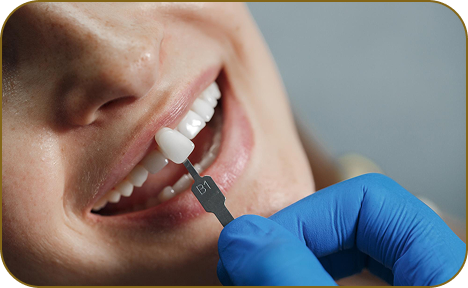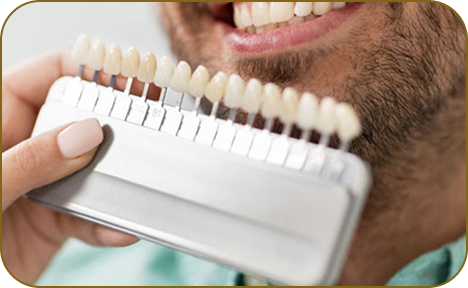Restorative and cosmetic dentistry
Restorative and aesthetic dentistry combines the repair of damaged teeth and the improvement of the smile’s appearance. It aims to restore the functionality of teeth while creating a harmonious and natural smile. Thanks to technological advancements, it is now possible to achieve durable and aesthetic results with treatments tailored to each patient.
Whether it’s to replace a missing tooth, correct a crack, lighten the tooth shade, or harmonize their alignment, our solutions combine health, comfort and beauty.


How does it work?
- 1. Consultation and Diagnosis:
During the first visit, the dentist evaluates the oral and dental health and discusses the patient’s aesthetic expectations. A clinical examination and, if necessary, radiographs are taken.
- 2. Personalized Treatment Plan:
Depending on the patient’s needs, a customized treatment plan is established. It can include restorative treatments (such as fillings or crowns) and aesthetic treatments (such as teeth whitening or veneers).
- 3. Preparation and Processing :
The dentist prepares the teeth according to the treatment chosen. This can range from a simple cleaning to the placement of crowns, implants, or veneers.
- 4. Make Repairs and Adjustments:
- 5. Tracking and Maintenance:
Following treatment, follow-up visits are recommended to ensure the longevity of the care and maintain a bright smile. Good home care is also essential.
FAQ?
What is the difference between restorative dentistry and aesthetic dentistry?
Restorative dentistry focuses on repairing damaged or missing teeth, while aesthetic dentistry aims to improve the appearance of the smile (shade, alignment, shape of teeth).
Do cosmetic treatments damage natural teeth?
No, when performed correctly, aesthetic treatments such as veneers or teeth whitening are designed to preserve the integrity of natural teeth while improving their appearance.
Are crowns and veneers permanent?
Crowns and veneers are durable solutions, but they require regular maintenance and may sometimes need to be replaced after several years due to natural wear and tear.
Can I get teeth whitening if I have fillings or crowns?
Yes, but it must be known that the materials of fillings and crowns do not react to bleaching. It may be necessary to replace them to harmonize the color after the treatment.
Are aesthetic dentistry treatments painful?
Most treatments are painless thanks to the use of local anesthetics and modern techniques that minimize discomfort. Some patients may experience slight sensitivity after certain procedures.
